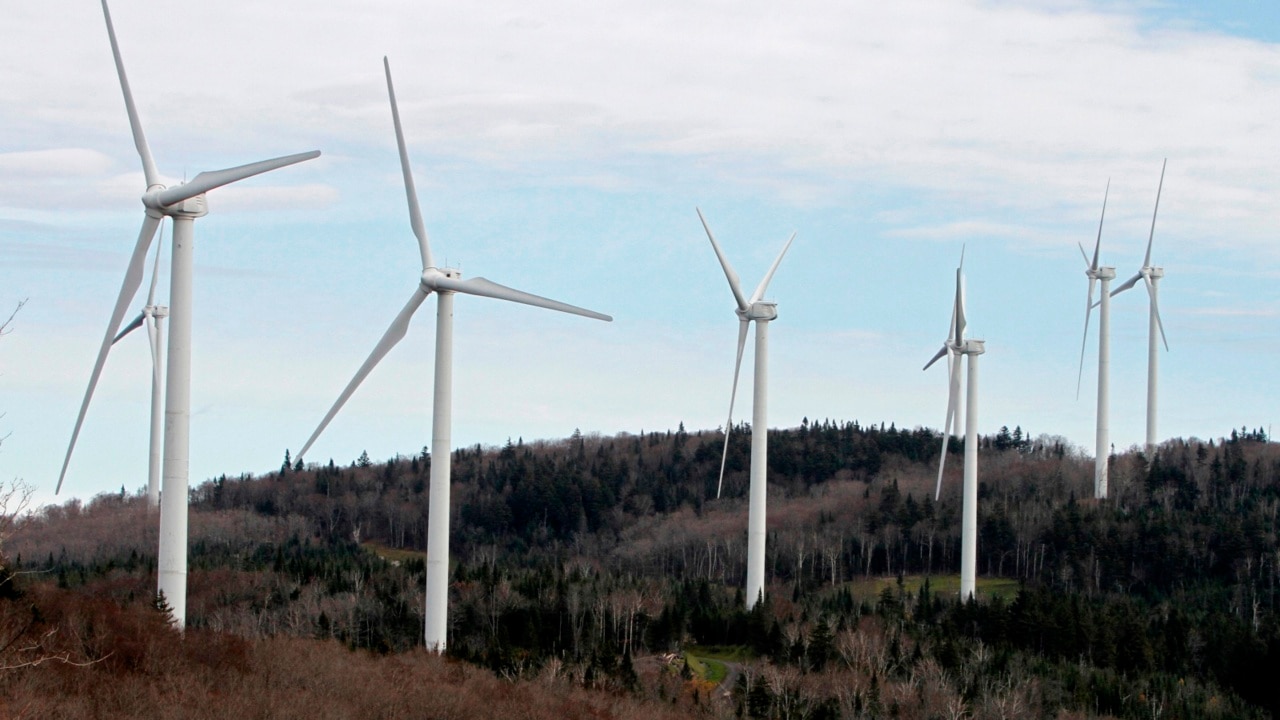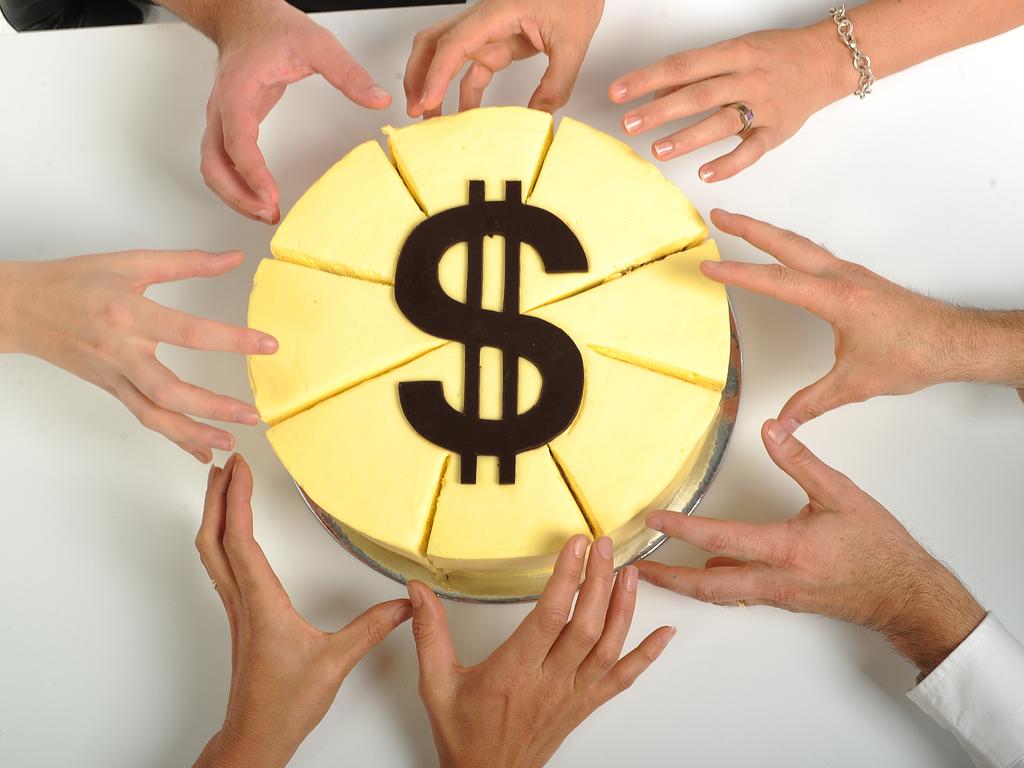Australian stocks finish financial year up almost 8 per cent, according to benchmark index
Australian stocks have delivered a solid return for the 2024 financial year of close to 8 per cent, according to the ASX 200 but a market correction is due.

Australian stocks have delivered a solid return for the 2024 financial year.
After soaring 9.7 per cent in 2023 as the AI boom accelerated on the launch of ChatGPT, corporate profits proved remarkably resilient to interest rate rises, and central banks began to slow the pace of policy tightening, the ASX 200 benchmark index jumped 7.8 per cent in the 2024 financial year.
The second consecutive year of solid returns followed the index losing 10 per cent in FY22 when valuations were crushed by the most aggressive interest rate surge in decades as central banks clamped down on inflation after an unprecedented amount of fiscal and monetary policy stimulus during the pandemic.
It’s also well above the decade-average gain of 4.8 per cent.
On a total return basis, which assumes dividends were reinvested in the index, the ASX 200 achieved a 12.1 per cent return in the 2024 financial year, after soaring 14.5 per cent in 2023.
Super funds in the balanced growth category – with roughly 70 per cent in shares and 30 per cent in bonds – are likely to have generated positive returns of about 9 per cent, according to Chant West.
In the US market, the flagship S&P 500 index was heading for a 23 per cent rise for the same period.
The tech-focused Nasdaq Composite rose 30 per cent amid a boom in US artificial intelligence stocks that has accounted for most of the rise in the US market in the past year.
AI poster child Nvidia has soared 192 per cent, adding a stunning $US2.24 trillion ($3.36 trillion) of market capitalisation which makes it $693bn larger than Australia’s entire sharemarket.
Still, the Australian sharemarket has been a reasonably consistent performer in the past decade rising seven years out of 10, with a total return that has averaged well above cash rates.
For superannuation funds, a final result near 9 per cent would be an excellent outcome.
It comes despite ongoing geopolitical tensions in the Middle East, Ukraine and Taiwan, looming elections in many countries including the US, and the fact that stubbornly high inflation caused markets to lessen expectations for the amount of US rate cuts this year.
While interest rate cuts have started in Europe and North America, the US Federal Reserve is now only expected to deliver about two this year – down from the expectation of as many as seven cuts at the start of the year.
In Australia the market is now 50 per cent priced for the Reserve Bank to actually increase its cash rate target to a more than 12-year high of 4.6 per cent in August. Cuts aren’t expected to start until late 2025.

“The experience over the past two years is another reminder of the importance of remaining patient and not getting distracted by shorter-term noise,” Chant West senior investment research manager Mano Mohankumar said.
Sharemarkets, particularly in the US and Japan, were “star performers” versus potential returns from bank accounts of about 4.5 per cent. Government bonds returned about 2 to 3 per cent, and unlisted listed commercial property remained negative as office valuations stayed under pressure, AMP head of investment strategy and chief economist Shane Oliver said.
Dr Oliver said the key drivers of the strength in shares were the anticipation of lower interest rates to come as inflation is mostly trending down, economic activity and corporate profits are stronger than expected – particularly in the US – and for US shares, the AI boom.
“Australian shares did well but were relative laggards on the back of ongoing China worries and concerns about the impact of rate hikes on Australian households,” he said.
But “more constrained and more volatile returns” were likely over the 2024-25 financial year.
Sharemarket valuations appeared stretched relative to bond yields, investor bullish sentiment was “elevated”, and the market was “technically overbought” with a narrowing breadth in the critical US market at a time when Nvidia and the tech sector were “seeing some wobbles”.
Geopolitical risks are “high” as France heads to the polls and the first US Presidential debate on Friday, Australian time, focused attention on the “big negative” of a renewed trade war if Donald Trump were re-elected.
“All of which leaves shares globally and in Australia at risk of another correction,” Dr Oliver said.
Australia’s sharemarket in particular was likely to continues to be a “relative underperformer” due to the risk of another interest rate increase coming well before the chance of rate cuts.
July is often a solid month seasonally, but August and September are seasonally weak months.
Despite the risk of another correction like the pullback that occurred last July to October, Dr Oliver expected another rise in the coming financial year as disinflation continued, more central banks including the Fed joined in cutting rates, and as recession was avoided or proved mild.
In terms of sectors, technology was by far the strongest performer in the Australian market over the past 12 months, surging 28 per cent. WiseTech was up 26 per cent and Xero up 16 per cent.
However, the small weighting of tech stocks in the local market meant it was not the main driver.

The financials sector, on the other hand, was by far the main positive influence as the major banks soared despite consensus sell recommendations from analysts. Commonwealth Bank rose a considerable 27 per cent.
Other strongly performing sectors included the consumer discretionary and property sectors.
Both achieved impressive financial year gains of close to 20 per cent.
However, such strong gains in interest rate-sensitive sectors may be hard to repeat, particularly if the RBA does pull the trigger on another rate rise or delay cuts until late 2025 as many now expect.
Among the worst performing sectors were energy, consumer staples, materials and communications. Caution over China’s economic outlook hit iron ore and lithium miners. BHP was down 5 per cent, Liontown Resources an enormous 68 per cent and IGO 63 per cent.
“Overall, the global economy and profit cycle looks in reasonable shape despite geopolitical risks,” Wilsons Advisory strategist David Cassidy said.
The low level of credit spreads, while not appealing from a valuation perspective, suggest investors continue to expect a relatively steady and benign economic expansion.
“Valuations in the US appear full but are not in bubble territory in our view.
“The structural profitability outlook for the US corporate sector – particularly tech – appears quite positive.
He expects a modest valuation contraction in the terms of the price-to-earnings multiple of the S&P 500 over the next one to two years, offset by solid earnings per share growth.
Mr Cassidy said the domestic macro backdrop also appeared relatively benign, although inflation was stickier and the near-term path of monetary policy more uncertain.
Mr Cassidy told clients to trim domestic equities from “neutral” to a slight “underweight” in global portfolios but maintain an “overweight” stance on fixed interest and floating rate credit.






To join the conversation, please log in. Don't have an account? Register
Join the conversation, you are commenting as Logout